Large-leaved hydrangea (Hydrangea macrophylla) is a favorite among beautiful flowering shrubs. Lush inflorescences of white, purple, blue and pink shades adorn garden plots all summer.
Despite the low frost resistance, gardeners are enthusiastically planting and breeding garden hydrangea.Through the efforts of breeders, remontant varieties have been developed that significantly extend the flowering time.
| Content:
|
Conditions for successful cultivation
If you know and take into account the preferences of this plant, then planting and caring for garden hydrangea in the open ground will not be at all difficult.
When is the best time to plant hydrangeas?
Experts recommend planting hydrangeas in open ground in the spring. During this period, the heat gradually increases, the sun's rays do not burn, and the humidity is moderate. Hydrangea has a better chance of growing a powerful root system, which will make it easier to survive winter frosts.
|
The most suitable day for planting hydrangeas will be a windless, cloudy, but warm day. |
The time for planting hydrangeas depends on the climatic conditions of the growing region:
- In central Russia, in particular in the Moscow region, hydrangea is planted in mid-April.
- In the northern regions, in the Urals, Siberia, and the Leningrad region, planting dates shift to the end of April or beginning of May.
- In southern regions, such as the Krasnodar Territory or the Caucasus, planting hydrangeas can begin in early April.
Hydrangeas take a long time to take root in a new place, so canopy hydrangeas are planted in open ground only in the southern regions. There the plant will have enough time to form a strong and healthy root system.
Choosing a landing site
An open, sunny place in the morning and evening hours is suitable for planting large-leaved hydrangea.Soft rays of the sun promote the rapid growth of shoots and leaves of the bush, creating favorable conditions for flowering. But the midday scorching rays of the sun have a negative effect on the plant - they cause the hydrangea leaves to turn yellow and wither. At noon, the crop should be in shade or partial shade, for example, on the east or southeast side of the building.
You should not plant hydrangea near large trees and shrubs with a branched, superficial root system, which can deprive it of nutrition and moisture. The optimal distance to large neighbors is 2-3 m.
Soil preparation
Hydrangea is very demanding on the quality and acidity of the soil. The optimal indicator of soil acidity, at which the crop develops harmoniously, is Ph 4-5.5. In addition, the soil should be loose, nutritious, without stagnant moisture. Heavy, clayey soils are diluted with sand and peat. The tree trunk circle must be kept clean and mulched with high-moor peat or pine litter.
Land from a coniferous forest is ideal for planting hydrangeas; no additional fertilizing is required.
You can prepare the soil for planting hydrangeas yourself, following the proportions:
- Sand - 1 part.
- High-moor peat - 1 part.
- Garden soil - 2 parts.
- Compost - 2 parts.
Fertilizers must be added to the resulting mixture:
- Urea - 1 tbsp. spoon
- Potassium sulfate - 1 tbsp. spoon
- Superphosphate - 2 tbsp. spoons
Important! In order not to disturb the acidity level, wood ash, chalk or lime are never added to the soil for hydrangea.
To create an original flower arrangement, the color of hydrangeas can be changed, but this is not possible for all varieties. If the variety has white flowers, then changing the color will not work.Varieties with blue or pink petals that have lost their richness over time have a chance to restore it.
|
The soil in the Middle Zone is often neutral or slightly acidic. It is suitable for pink hydrangea varieties. To obtain the blue color of the inflorescences, it is necessary to use additional means. |
Important! To obtain a blue pigment, the soil must have soluble aluminum.
When the soil is characterized by low acidity, the flower cannot obtain an important element from it. Therefore, for soil with low acidity, the addition of aluminum sulfate is required at the rate of: 500 g per 1 sq. m or special aluminum sulfate intended for dissolution in water. When watering, it is added to the container.
But a weak solution of potassium permanganate will help the petals turn pinkish. But you will have to do this treatment constantly, since the effect of the solution ends quickly.
Planting large-leaved hydrangea
Hydrangea has versatility of use. A bush with bright caps of inflorescences looks equally beautiful both in group and single plantings. Therefore, before you start planting seedlings, you need to decide how the plants will be arranged: in a row or in individual specimens.
|
For hedges, seedlings are placed in trenches 1 m wide. For single plantings, individual holes are dug, maintaining a distance of 1-3 m between bushes. |
Step-by-step technology for planting hydrangeas in open ground:
- The planting hole is dug a little larger than the root system of the seedling. Drainage must be added to the bottom of the hole.
- Nutrient soil is poured onto the bottom in the form of a mound.
- The plant is placed on a mound, after straightening the roots.The root collar is located no lower than 2-3 cm from the soil surface.
- The planting hole is filled with soil, compacted, and watered abundantly.
- Mulch the tree trunk circle with peat, sawdust, pine needles or bark. The mulch layer should be at least 5-7 cm.
- During adaptation and rooting of the seedling, the planting should be protected from strong wind and sun.
Planting seedlings with a closed root system
Purchasing hydrangea planting material with a closed root system is the most acceptable option. Plants purchased from trusted nurseries take root easily, and they can be planted at almost any time: from spring to autumn.
Planting of seedlings with a closed root system is carried out using the transshipment method. Before this, the soil in the container must be well watered, to such a state that the roots with a lump of earth can be easily removed. Otherwise, standard planting technology should be followed.
Hydrangea care
During the first two years after planting in open ground, caring for large-leaved hydrangea consists of abundant watering, applying a sufficient amount of fertilizer, mulching, loosening the soil and pruning.
Watering
Watering hydrangea bushes should be abundant and regular. Hydrangea loves moisture and does not tolerate drought. The water should not contain chlorine, lime, and should be soft. It is best to use settled tap water or rainwater. It is necessary to ensure that the soil in the tree trunk circle is always slightly moist.
|
It is necessary to pour at least 2 buckets of water under one bush once every 7 days; in dry seasons, watering is organized more often. |
During prolonged rains, you can refrain from watering. Hydrangea is a moisture-loving plant, but will not tolerate excess moisture.Due to stagnation of water, the roots of this plant begin to rot. Planting the plant in lowlands and wetlands should be avoided.
Top dressing
Fertilizing significantly affects the flowering and color of hydrangea petals, and the restoration of the crop after flowering.
• in spring. Hydrangea bushes should be fed in March. The first feeding will help the plant form green mass in the required volume. The plant responds well to the application of potassium sulfate and urea. The bushes are watered with an aqueous solution of these elements at the rate of 5 liters per bush. A good alternative is fertilizing with organic fertilizers in the form of slurry diluted with water 1:10. Spraying and watering with a weak solution of potassium permanganate must be carried out 3 times in the spring. This procedure makes the shoots flexible and strong.
• In summer. In June, to increase the number of buds, the bushes are treated with an aqueous solution of superphosphate or any other fertilizer containing potassium and phosphorus. This feeding promotes better ripening of shoots for winter and the formation of flower buds for next year.
|
In July, to increase flowering time, the bushes are watered with diluted nettle infusion. |
In August, complex mineral fertilizers are not used, but it is not a bad idea to water the bushes with organic fertilizers, slurry or a solution of bird droppings.
• in autumn. Potassium and phosphorus are necessary elements for successful wintering of hydrangea. The feeding solution is prepared at the rate of 1 tbsp. spoons of potassium sulfate and superphosphate per 10 liters of water. One bush will require about 7 liters of this fertilizer. Tree trunk circles should be covered with compost or peat.Such a shelter will protect the roots of the plant from freezing, feed the hydrangea with nutrients, and help it survive severe frosts.
Important! All fertilizing is carried out after preliminary watering.
Loosening the soil
Mulching and loosening are necessary activities not only after planting, but throughout the season, as needed. During the summer, the soil is loosened at least 3-4 times, to a depth of 5 cm, trying not to damage the surface roots. High-moor peat, pine bark, sawdust, pine needles, and dry leaves can be used as mulch.
Pruning hydrangea
Pruning in spring is done rarely and with caution, since flowering occurs on last year's shoots, and flower buds can be accidentally cut off from the stems. Only at the moment the buds appear will it be clear which of the shoots are damaged or dead, so you can avoid mistakes when removing dry, weakened shoots.
|
Anti-aging pruning involves shortening all branches by 1/3 with sharp pruning shears. |
Without crown formation, garden hydrangea bushes take on a neglected appearance. The size of the inflorescences also depends on pruning.
Crown formation is carried out in 2 stages. First, in early spring of the first year, the shoots of the main growth are shortened to noticeable buds. In autumn, weakened shoots that grow sideways and disrupt the spherical shape of the bush are cut out. After the end of summer flowering, the faded inflorescences are cut off, repeating the steps every year.
How to cover large-leaved hydrangea for the winter
Large-leaved hydrangea has low winter hardiness. Flowering after winter directly depends on how the shoots overwinter. If you neglect to protect plants from frost, the shoots with flower buds will freeze and there will be no flowering at all.With the right shelter, hydrangea will become a real decoration of the garden.
- From September, all weak and diseased shoots are pruned, and then some do a formative pruning of the bush.
- In mid-September, all lower leaves are removed. Before the first frost, only the upper leaves should remain on the shoots, which will protect the flower buds from freezing.
- If autumn turns out to be rainy, the shrubs must be covered with plastic film to protect them from excess moisture so that the hydrangea goes to winter with a moderate moisture content in the soil and with a dry crown. During dry autumn, the bushes need to be watered thoroughly.
- At the end of October, before the onset of night frosts, the bushes are mulched with peat, one bucket per bush, slightly compacting it. The stems of garden hydrangea are tied in several pieces and bent to the ground, where they are secured with metal hooks. You can spread the shoots in half on both sides, or you can - in the form of a sun. Then they cover it with spruce branches.
- A layer of breathable covering material is placed over the spruce branches, which, in turn, is covered with dry leaf litter.
- The last layer should be waterproof, usually made of polyethylene film. This stage occurs with the onset of persistent cold weather. For ventilation, holes are left in the film, which are covered during severe frosts and opened at above-zero temperatures in winter.
- In spring, the removal of cover occurs gradually to avoid temperature changes, which are detrimental to flower buds. You need to focus on the weather. You can abandon the shelter after the weather with positive temperatures sets in.
Planting and caring for hydrangea in pots
The main difficulty in growing large-leaved hydrangea is its low frost resistance. This problem can be solved by container growing. In containers, hydrangeas overwinter reliably, bloom early and bloom profusely.
What is the best way to grow
In this regard, it is necessary to take a responsible approach to choosing a container. For large-leaved hydrangea, the container should be proportionate to the roots, and the base should be wide to ensure the stability of the container. The most commonly used are clay, plastic or metal pots. Each option has its own advantages.
|
Clay pots do not overheat, breathe and are quite stable. These pots usually have one small drainage hole. In rainy weather, this is not enough to drain water, as the roots may rot. |
Plastic containers are lightweight and easy to move around the site. The number of drainage holes can be made as much as needed for a particular plant.
Metal containers are heavy and quickly overheat in the sun, which has a detrimental effect on the root system of the plant.
Caring for large-leaved hydrangea in pots
In spring, hydrangeas in pots are placed on the east or southeast side of buildings, protected from drafts. When the buds begin to color, place them under a canopy or in the garden. Fertilizing is done with organic fertilizers every 7–10 days.
After the hydrangea has finished flowering, all dried inflorescences are cut off to the first pair of strong buds. Bushes of varieties with increased formation of shoots are thinned out.
|
Preparing garden hydrangea for wintering indoors is the most important stage in growing hydrangea in a pot. It is necessary to wait for natural leaf fall, which usually occurs after the first frost. |
Next, the pots are placed in a dark cellar at a temperature of 0…+10 °C. During the cold season, plants in containers are watered minimally. Just make sure that the soil in the container does not dry out at all. Watering can be replaced by adding snow to the pot. This technique helps the shoots and root system to remain at rest and not be damaged.
In the absence of a cellar in a private house, hydrangeas can overwinter on a cold veranda, where the temperature does not drop below zero. In apartment buildings, hydrangea can be kept on an insulated loggia. Some varieties can withstand temperature drops of up to 5°C, so if the temperature on the loggia briefly drops to 12°C, the hydrangea will survive it. But on frostier nights on the loggia you need to turn on the heating.
Spring work
The awakening of container hydrangeas begins in March, when the pots are taken out of the cellar. It is necessary that the temperature increase occurs gradually. The first time the waking plant needs to be watered with warm water, the second time you water it, add fertilizer, for example, Fertik.
At the end of April, containers with flowers are placed outside, protected from spring frosts with breathable covering material, or placed in a greenhouse. The main goal is to preserve flower buds in order to observe flowering in June.
To successfully grow large-leaved hydrangea in a pot you need:
- A container with sufficient drainage holes.
- Nutritious, drained soil with an acidic reaction.
- Dry cellar or underground with a temperature of 0...+10°C.
- Keeping the earthen coma moist.
- Sufficient watering and fertilizing during the growth and flowering period.
Keeping garden hydrangea in pots allows you to grow hydrangeas of any variety with different frost resistance.
Diseases and pests
With proper planting and proper care, garden hydrangea is little susceptible to disease or attack by pests. But there are factors that cannot always be avoided and that lead to diseases or pest attacks:
- Excessively high humidity.
- Temperature changes.
- Soil contamination by pathogenic microorganisms.
- Lack of nutrients.
These factors can provoke diseases of shrubs.
Chlorosis
The disease manifests itself in yellowing of the leaves, at the same time the veins remain dark. The buds are formed underdeveloped and deformed. Most often, plants that grow in one place for a long time without replanting are susceptible to chlorosis. The cause is a metabolic disorder due to a catastrophic lack of iron.
To treat chlorosis, experts recommend feeding hydrangea with preparations containing iron: Agricol, Antichlorosis, Ferovit.
Gray rot
Gray mold is a fungal disease and is more likely to occur during rainy weather. It damages the green mass, which becomes watery. Spraying with Fundazol will help in the treatment of gray rot.
Infected areas must be cut out and burned.
Powdery mildew
The disease is manifested by the appearance of yellow spots on the leaves. Powdery mildew is treated by treating with copper-containing preparations. The fungicides Fitosporin, Skor will also help to cope with the disease.
Ring spot
With this disease, the leaves wrinkle and the plant withers. Ring spot is a viral disease that has not yet been well studied.
There are no effective drugs to treat this disease.The fight consists of localizing the source of infection and destroying diseased hydrangea bushes. The cause of the disease can be insects or contaminated planting material.
spider mite
The pest attacks the green mass of the bush. The leaves dry out, begin to fall off, and cobwebs appear on the back of the leaves. For treatment, it is necessary to treat the plant with Actellik.
The best protection against disease is preventive measures. To prevent the development of diseases and protect hydrangea from insect pests, it is necessary to pay attention to prevention.
- Treatment of crops in early spring with antifungal drugs.
- Maintaining the correct acidity and mineral composition of the soil.
- Seedlings, especially those purchased from an unverified seller, must be disinfected with copper sulfate.
- It is recommended to add insecticidal preparations to the soil during planting.
- Disinfection of garden tools.
- Regular weeding of the garden is required to prevent pests and infections from multiplying on the weeds. Destruction of all cut shoots or leaves.
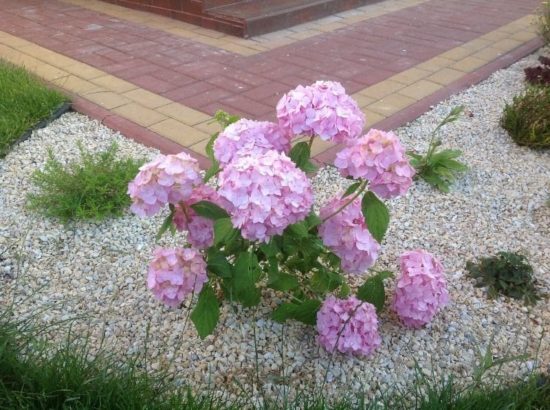
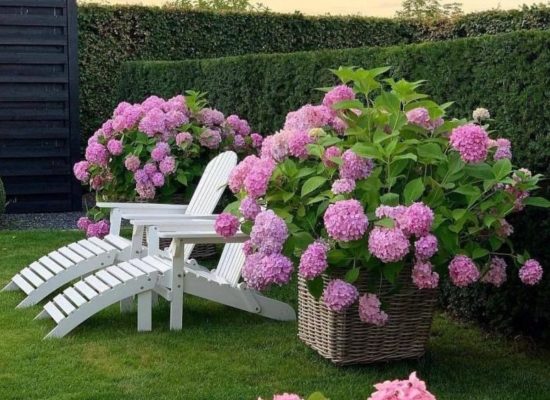

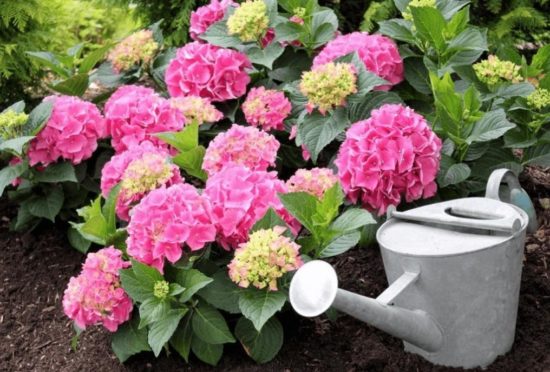
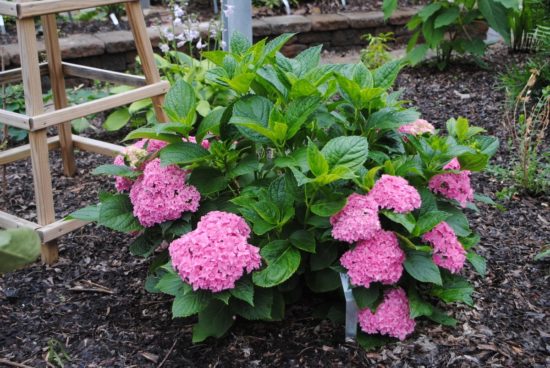
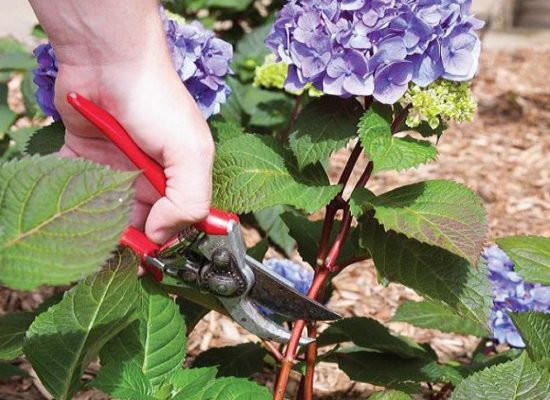
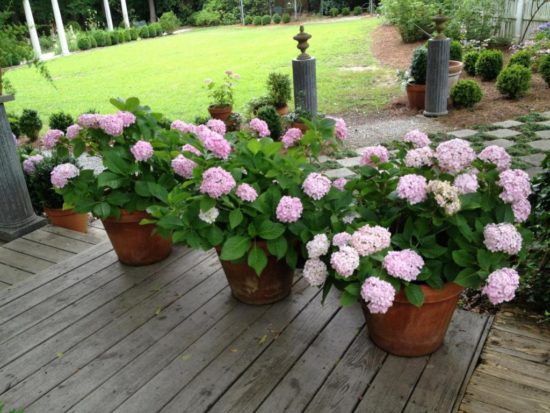
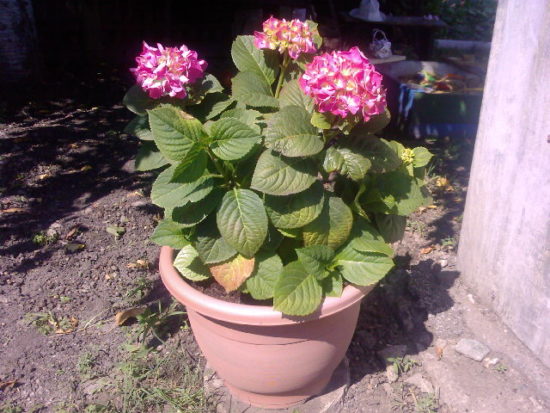

 CUCUMBERS NEVER GET SICK, I'VE BEEN USING ONLY THIS FOR 40 YEARS! I SHARE A SECRET WITH YOU, CUCUMBERS ARE LIKE THE PICTURE!
CUCUMBERS NEVER GET SICK, I'VE BEEN USING ONLY THIS FOR 40 YEARS! I SHARE A SECRET WITH YOU, CUCUMBERS ARE LIKE THE PICTURE! You can dig a bucket of potatoes from each bush. Do you think these are fairy tales? Watch the video
You can dig a bucket of potatoes from each bush. Do you think these are fairy tales? Watch the video
 How our fellow gardeners work in Korea. There is a lot to learn and just fun to watch.
How our fellow gardeners work in Korea. There is a lot to learn and just fun to watch. Eye trainer. The author claims that with daily viewing, vision is restored. They don't charge money for views.
Eye trainer. The author claims that with daily viewing, vision is restored. They don't charge money for views. A 3-ingredient cake recipe in 30 minutes is better than Napoleon. Simple and very tasty.
A 3-ingredient cake recipe in 30 minutes is better than Napoleon. Simple and very tasty. Therapeutic exercises for cervical osteochondrosis. A complete set of exercises.
Therapeutic exercises for cervical osteochondrosis. A complete set of exercises. Which indoor plants match your zodiac sign?
Which indoor plants match your zodiac sign? What about them? Excursion to German dachas.
What about them? Excursion to German dachas.